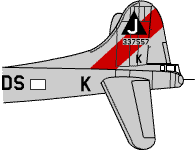 351st Bomb Group
351st Bomb Group
 351st Bomb Group
351st Bomb Group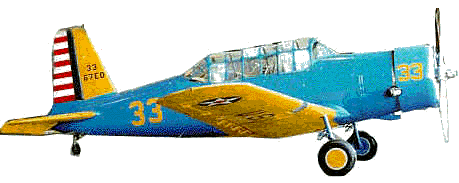
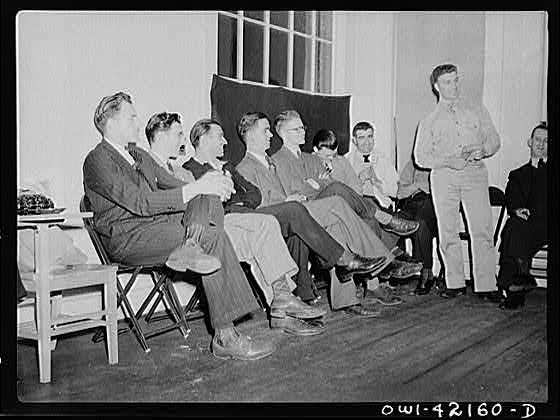
December 7, 1941
with the Japanese attack on Pearl Harbor and its military facilities the
world fabric, as we knew it came apart at the seams overnight. Barely 20
years passed since WWI came to a close. Sept. 1, 1939 Germany invaded Poland
and destroyed its Air Force in a few days. For two long years England’s
young pilots had been flying combat against Germany’s bombers and fighters.
Upon hearing radio
reports and seeing newspaper headlines thousands of men reported to Army
recruiting offices to sign up. The call for experienced fliers went out
but it was a call left unanswered with respect to immediate mobilization
of pilots in numbers. Post-Depression America in 1939-1940 had a pitifully
small and woefully under equipped Air Corps consisting of antiquated aircraft
like the Stearman and Brewster Buffalo biplanes and few uniformed instructors.
Airfields in use at the time were small and few USAAF facilities were initially
earmarked or built for mass pilot training. Another problem became glaringly
apparent after a few months of aerial combat. US pilots were up against
the Axis' best trained and most experienced pilots. These deficiencies
were about to change in short order.
The Western
Technical Training Command was established for training of aircrew
and ground mechanics to order to fly and service B-17s and other aircraft.
Overnight the small towns of Phoenix, Yuma and Kingman, AZ became centers
for training Allied airmen owing to excellent flying weather and interior
security. Luke Field and Falcon Army Air Field in Phoenix were a mecca
for US Aviation Cadets. Under Gen. Hap Arnold and Jimmy Doolittle the new
Army Air Force took shape. Recognizing the need for combat skills
and tight bomber organization experienced British and Canadian fliers advised
and assisted the fledgling Army Air Force in getting airborne.
From
Civilian to Qualified Pilot
The typical WWII pilot
had limited or no experience with aircraft prior to his ETO service. Depending
on the nature of being selected as Pilot [AVCAD] Bombardier, or Navigator,
the service schools generally ran eight - ten weeks. Between schools, transfers
and reporting for duty the normal bomber pilot evolution was approximately
eight months in duration. Some cadet candidates with civil flight experience
came from private colleges or universities and progressed through the system
with many becoming senior officers and base unit commanders at a young
age. One of the 351st BG Squadron Commanders, Col. Hatcher, was 26 yrs.
old.
With the end of the
war in sight, the USAAF cadet-training pipeline began filling up and then
slowed to a crawl. Most flight schools and academies ceased training operations
within a year with the last airmen graduating in December 1944.

US
Army Air Corps Fields
In
contrast the Air Corps established its own schools for B-17 pilots and
aerial gunners at Las Vegas, NV and Amarillo, TX in May 1942 (ground
mechanics).
Due
to an early war time shortage of pilots available to patrol US Interior
and coastal areas the Civil Air Patrol was founded the week before Pearl
Harbor. The pressure was on to develop skilled pilots efficiently and quickly.
These dual functioning training schools at Amarillo, Eglin, Sumter, Tuskegee
and a little known place called “Las Vegas” (a hot dusty village of 9,000
souls in 1941) were notable for their graduates excellent combat record
and for turning out motivated pilots and aircraft mechanics in great numbers.

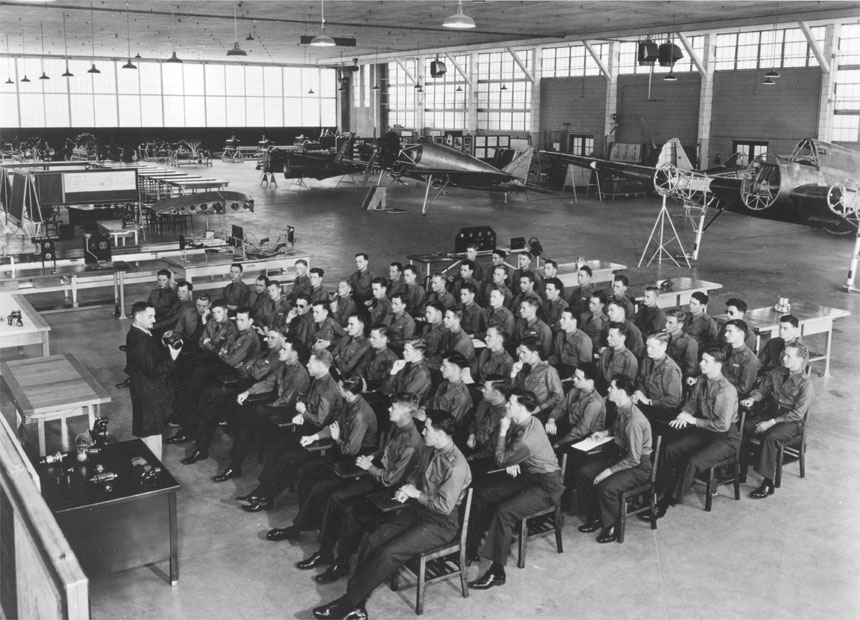
| LVAAF
– NELLIS AFB HISTORY
“A Western Air Express
dirt runway, a water well and a small operations shack 8 miles north
of Las Vegas was the setting of the original site of today's Nellis Air
Force Base.
A detachment of five officers took up residence in a small basement room in the Las Vegas Post Office Bldg. In May 1941. They were staff officers of the 79th Air Base Group, commanded by then Lt. Col. Martinus Stenseth. A month later the military population of Las Vegas Army Air Field more than doubled with the arrival of five administrative NCOs and other enlisted men. During those first
few months, there were no services or facilities at the new base. Enlisted
men were quartered in the Works Progress Administration barracks in town.
Its initial motor pool consisted of 6 vintage trucks and a semi-trailer
often found parked by the barracks. Supply and logistics had not yet been
organized and mechanics had to borrow nuts, bolts, and old parts from service
stations in Las Vegas. Gasoline and oil was borrowed from the Civilian
Conservation Corps
From this humble beginning,
Las Vegas Army Air Field (LVAAF) grew rapidly until 1942 when the first
B-17s arrived, giving students their first chance to train in the gun turret
of an actual combat plane and providing aircraft to train co-pilots in
ground and transition school. At the height of World War II, 600 gunnery
students and 215 co-pilots graduated from LVAAF every
|
Flexible Gunnery and Aircraft Mechanic schools were no picnic. Classroom facilities were rough, sparsely heated in winter and stifling hot in summer. States like Arizona, Nevada, Texas, Nebraska, Oklahoma, Kansas, South Carolina, and Florida gained an entire new population overnight. Recruits reported for duty at little known places like Yuma, Kingman, Lincoln, Tonopah, Las Vegas and Rapid City. Gunnery school morale was high and candidates were inclined to give it their best effort rather than become a foot soldier.
One of the biggest challenges for the waist gunners was the -57 F wind howling near the waist of the bombers. To counter the extreme cold waist gunners were outfitted with a heated flying suit, a fleece lined leather jacket and pants with heavy boots and gloves. Imagine operating a heavy machine gun under such grueling conditions!
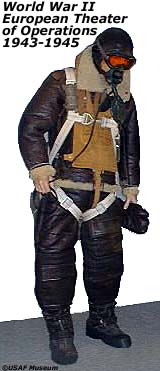



Upon transfer to an Operational Group in the ETO gunners were highly skilled and knew their aircraft inside and out. To prove their proficiency with the deadly Browning M2 “Ma Deuce” machine gun Flexible Gunnery School graduates were required to strip and reassemble their weapons while blindfolded and wearing gloves. One of these grads, Sgt. "Snuffy" Smith, won the Medal of Honor for saving his crew and plane by putting out a terrible fire with his bare hands. Of all airmen serving in the war aerial gunners sustained the highest number of combat casualties.
Late
Developments 1944-1945
Additionally aircrews
were taught procedures for crash landing and ditching
a heavy bomber at sea. Directional beacons and radios were tested by 8th
Air Force pilots which brought improved bombing accuracy by reducing navigational
error. Special ‘H’ ships were outfitted with radomes underneath to enable
radar guided bomb runs.
Towards the last few
months of the war in the Pacific a special lightweight Air
Crew Ration was developed, tested and accepted for use on longer B-29
flights. By Jan. 1945 B-29 crews were being trained in the use of automatically-fed
remotely controlled gun turrets.